
Carrie R
Sewing is my passion. I took up needle and thread at the tender age of eight, and fell in love with the craft in my early teens. That craft blossomed as I continued my education, earning a Bachelor of Science Degree in Costume Design.
In my early college days, I was introduced to the art of vestment making. Working with needle and thread, fabric and trims to make beautiful vestment and inspire and encourage others to use their skills in service for the Lord's House is now my heart's desire.
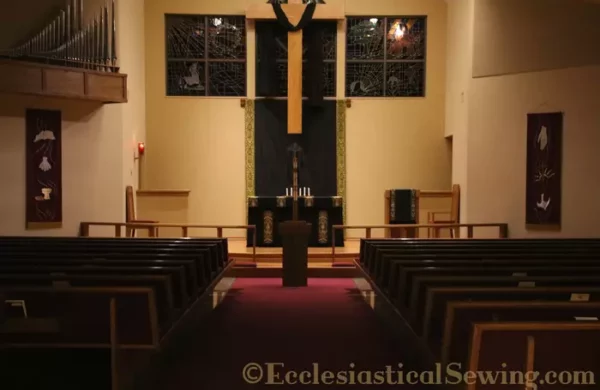
Good Friday in 2017 – church adhered to solemn customs, draping the altar in black with six candles, the seventh being the Paschal candle. While black is our choice, I found practices in other churches, employing red or violet. Despite the somber tone of Good Friday services, they set the stage for a joyous Easter celebration.
Like this:
Like Loading...
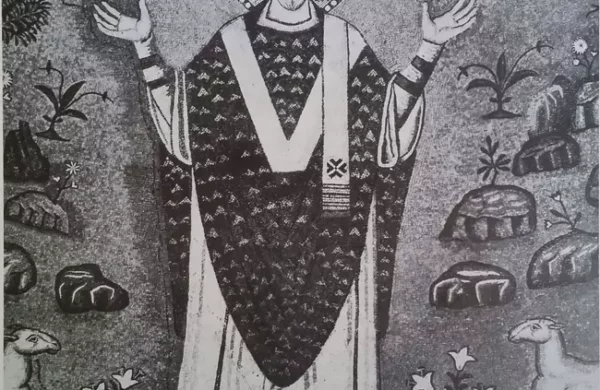
In Janet Mayo’s book, “A History of Ecclesiastical Dress,” she begins by exploring the Early Church’s post-Christ era, progressing chronologically. The narrative delves into various garments, contextualizing them within specific eras, locations, and decrees.
Like this:
Like Loading...
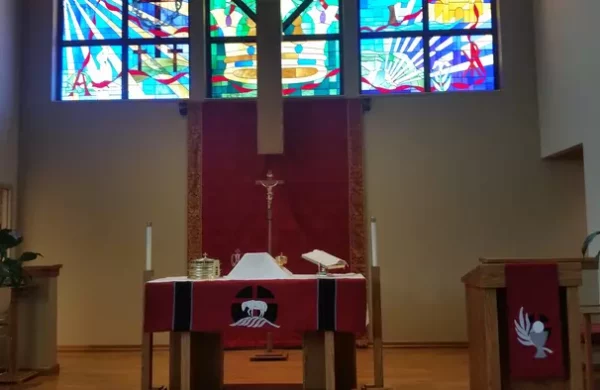
The Fabric chosen for the Dossal is the lovely and rich Litchfield Brocade with Red/Gold Fairford orphrey bands edged with Landsdowne Braid. These fabric and trim combinations create a stunning final result that has added beauty and color to the church.
Like this:
Like Loading...
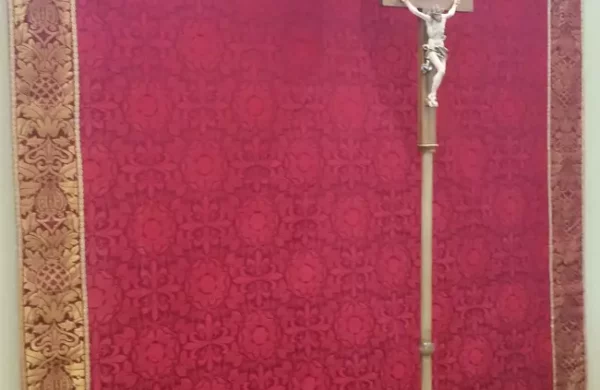
Palm Sunday, the celebration of Christ’s triumphant entry into Jerusalem, This Sunday is a special Sunday with all the traditions accompanying it: the hymns, the palm or olive or willow or flowering branches, the professionals, and vestments and paraments.
Like this:
Like Loading...
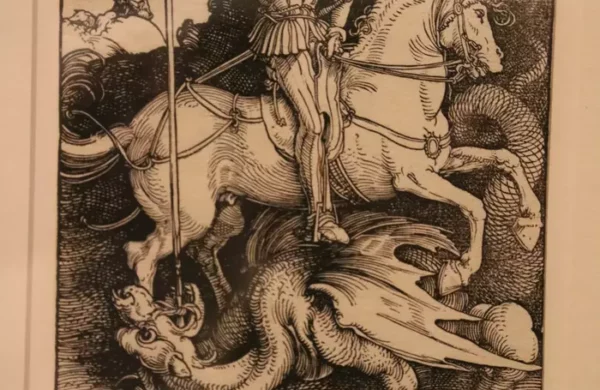
Dürer and Cranach, two Northern Renaissance artists, are remembered on April 6th. Dürer, the son of a goldsmith, apprenticed as a painter and printmaker, gaining fame for his woodcuts and paintings. He created portraits of notable figures like Erasmus and read Luther’s writings. Cranach, the Elder, had less known formal art training but became the court painter of Wittenberg by 1505. He used various mediums, witnessed Luther’s marriage, and engaged in business ventures, producing works with both Protestant and Roman Catholic themes.
Like this:
Like Loading...
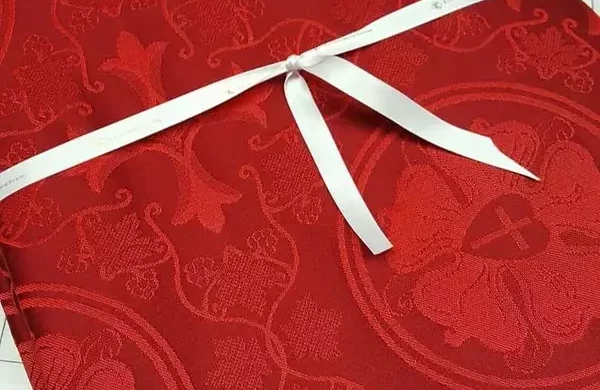
April Goal – To sew a Gothic Chasuble. there are two Gothic Chasuble patterns, each is a slight variation. Constructing one of the variations of the Gothic Chasuble. The chasuble marked by its long sleeves. An oval or circular in shape if it were to be spread out flat on the floor. Draping over the priest or pastor, almost poncho-like in resemblance.
Like this:
Like Loading...
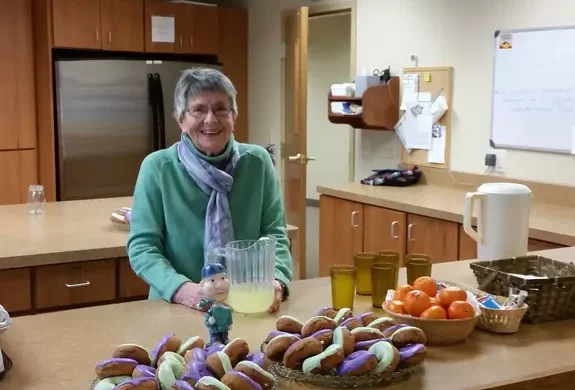
St. Urho’s Day, celebrated on March 16th, the day before the better-known feast of some minor saint from Ireland, who was alleged to have driven the snakes from the island.
Like this:
Like Loading...
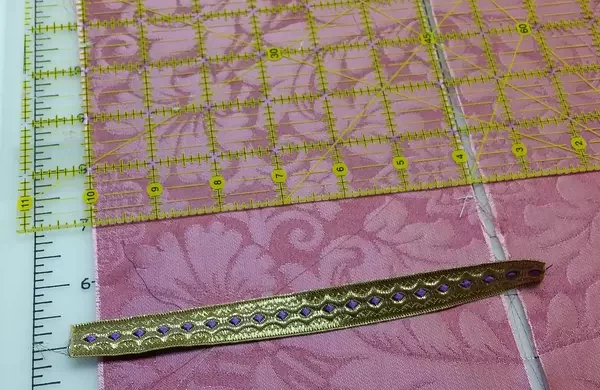
The Warm & Fuzzies We have had a weird February in Minnesota and now March is proving that weather is truly an unpredictable thing. Spring is fighting hard to… Read more The Warm & Fuzzies →
Like this:
Like Loading...
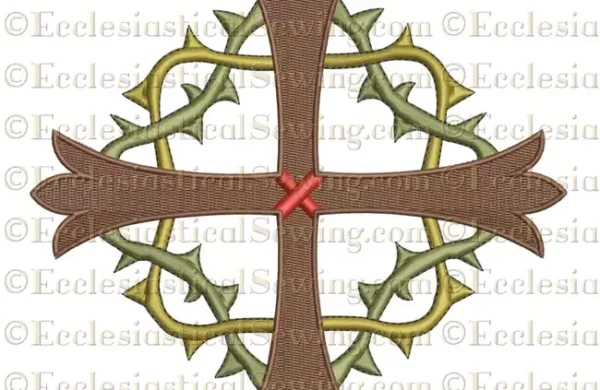
Lent is a penitential season and a time of reflection. Lent has always been a favorite season of the church year. Throughout the years – the rich tapestry of hymns reserved specifically for Lent remains vivid, as the scriptures of Christ’s Passion and Lenten hymns were forever twined together in mind. One could begin to imagine the agony Christ suffered as he prayed. Singing the hymn “Go to Dark Gethsemane” in the dim evening light of the church. It was then and still a favorite Lenten Hymn.
Like this:
Like Loading...

Many Christians today overlook historic Church traditions and vestments. Like Roman Catholic, Eastern Orthodox, Anglican, Lutheran, and Episcopalian have unique practices and materials for their vestments. Despite the beauty of these traditions, many Christians are unaware of them, similar to the limited recognition of events like Fat Tuesday. The appreciation for and celebration of these practices often involve a smaller group within the broader Christian community.
Like this:
Like Loading...
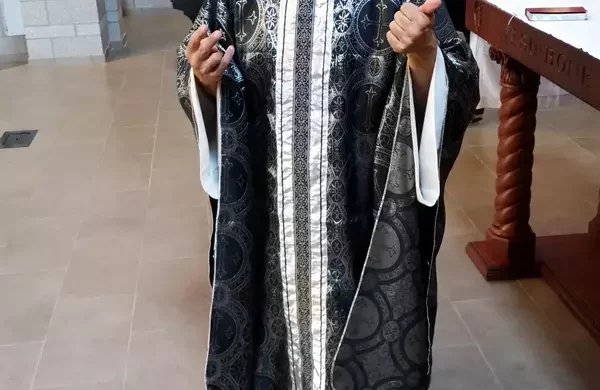
David, a dedicated reader, has been creating beautiful liturgical vestments for his priest and parish. He recently shared photos of his work, showcasing an All Souls Day chasuble and stole. The orphrey features silver lamé with two different ribbons topstitched on. David’s creativity is evident in his material choices, and he even incorporated a Dogwood Flower design in the lace of the surplice, paying tribute to North Carolina’s official state flower.
Like this:
Like Loading...
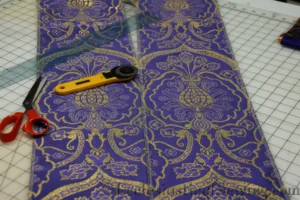
Our goal and mission at Ecclesiastical Sewing are to provide high-quality fabrics, trims, designs, and finished vestments suitable for use in the service of the church. To do a better job at that, Hoping that we might get some feedback and suggestions from you, our faithful readers, as well as from members of the clergy.
Like this:
Like Loading...
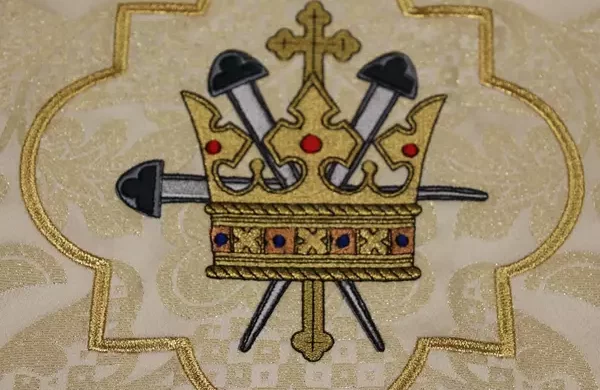
The countless hours of restoration for the Crown of Glory design took place during the season of Lent. And in the end, The King of King’s design shines forth with joy at the dawning of Christmas and Easter morn.
Like this:
Like Loading...
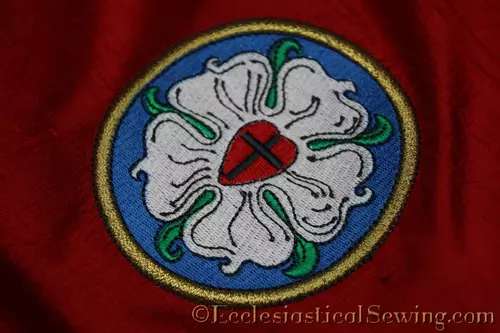
The Luther Rose Liturgical Brocade Fabric, borne from collaboration and inspiration, symbolizes the 500th Anniversary of the Reformation. Designed with Patonce Cross and Luther Rose Emblem motifs, the fabric captures a distinctly Lutheran essence. The design with the guidance of skilled partners, including Edward Riojas, who added a vine motif. The result is a richly symbolic fabric, a testament to the dedication and support of those involved in its creation.
Like this:
Like Loading...
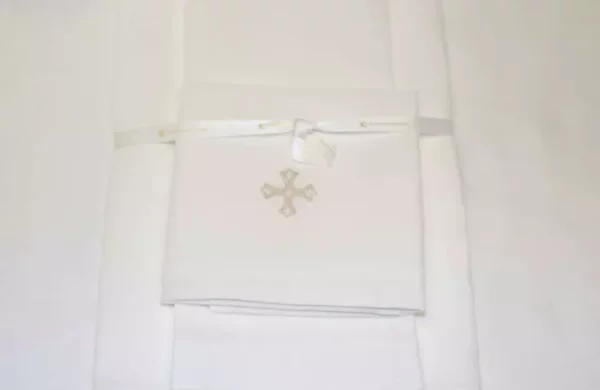
Each small altar linen is meticulously handcrafted for attention to detail. We start by pre-shrinking and pressing the linen carefully. Cutting is done along the thread for a straight edge. Hemming follows with precise folding and stitching, using delicate thread for quality. This ensures high-quality altar linens.
Like this:
Like Loading...

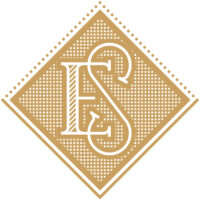














You must be logged in to post a comment.